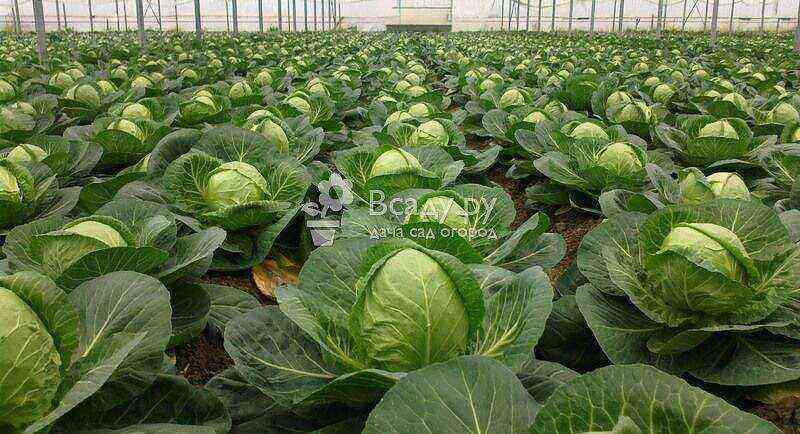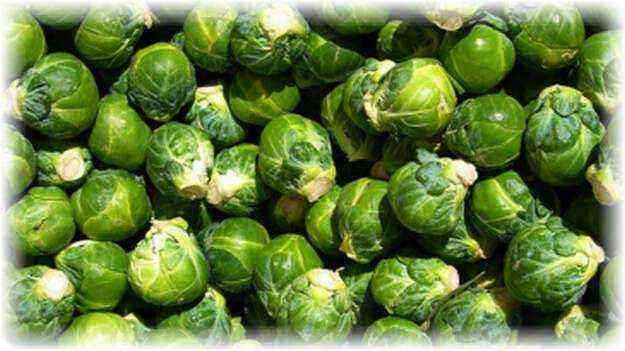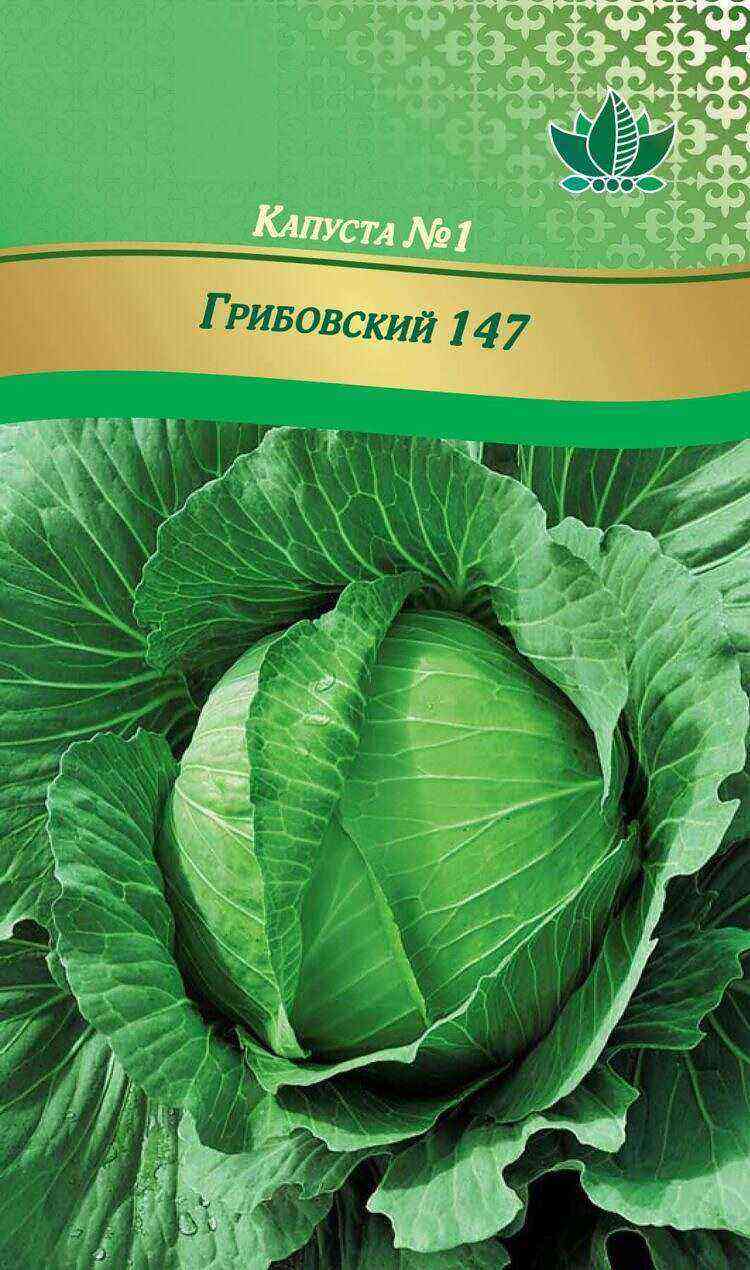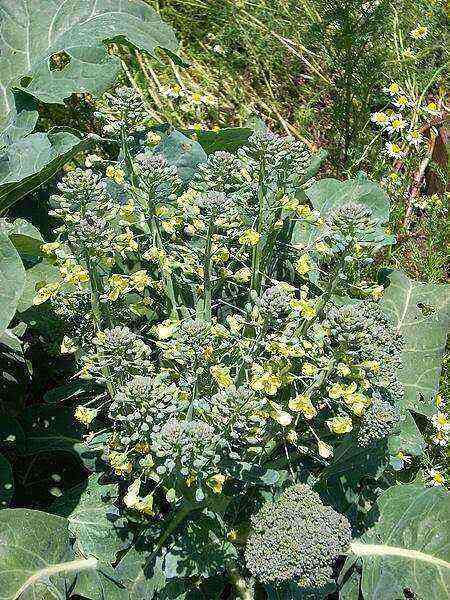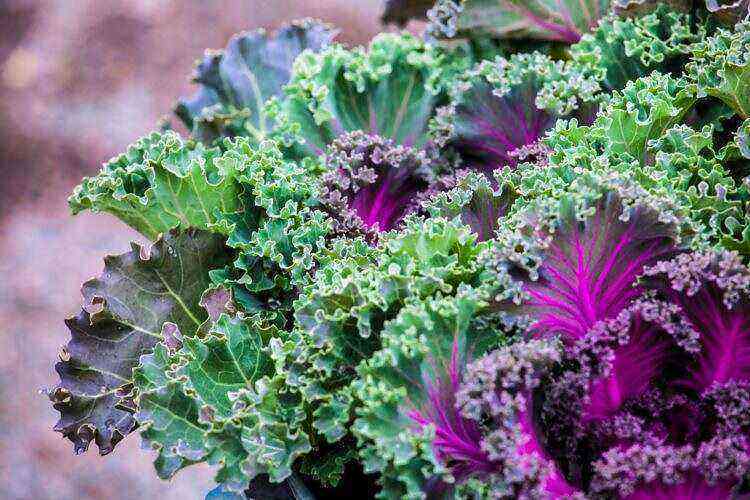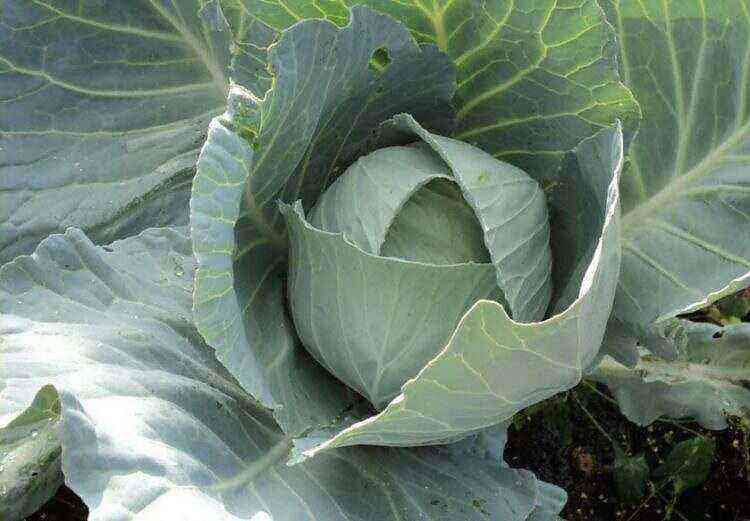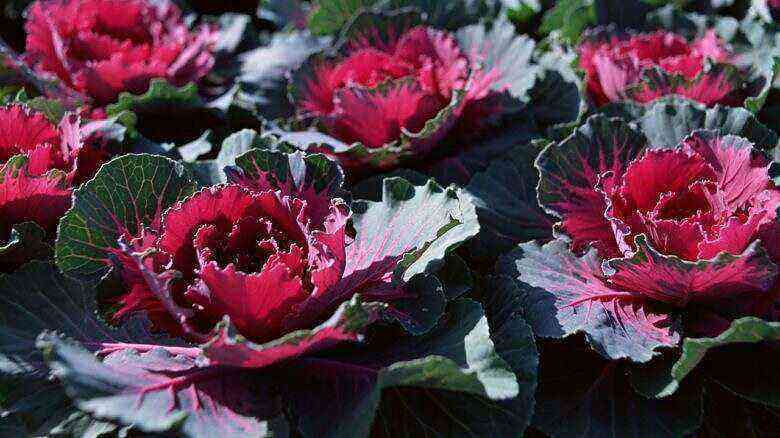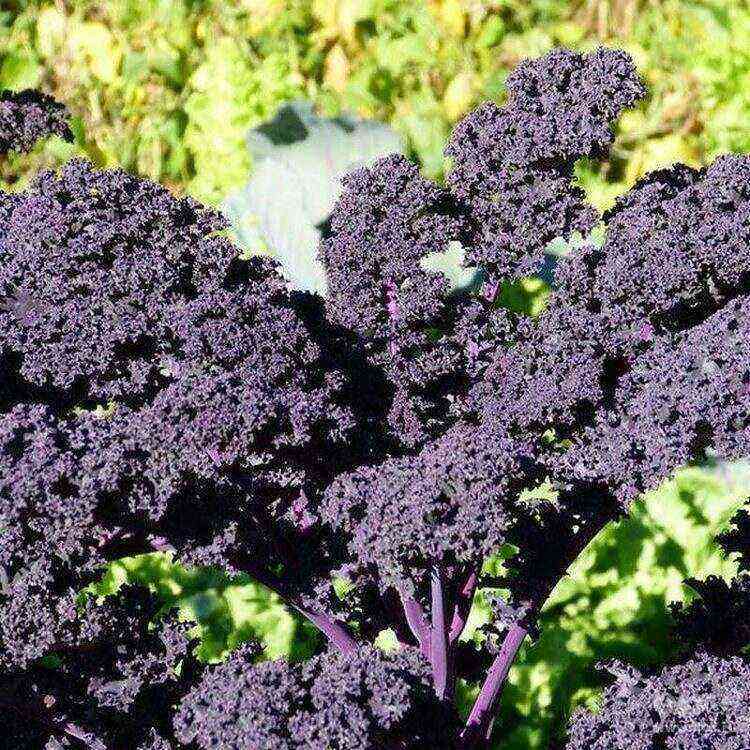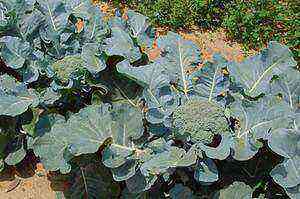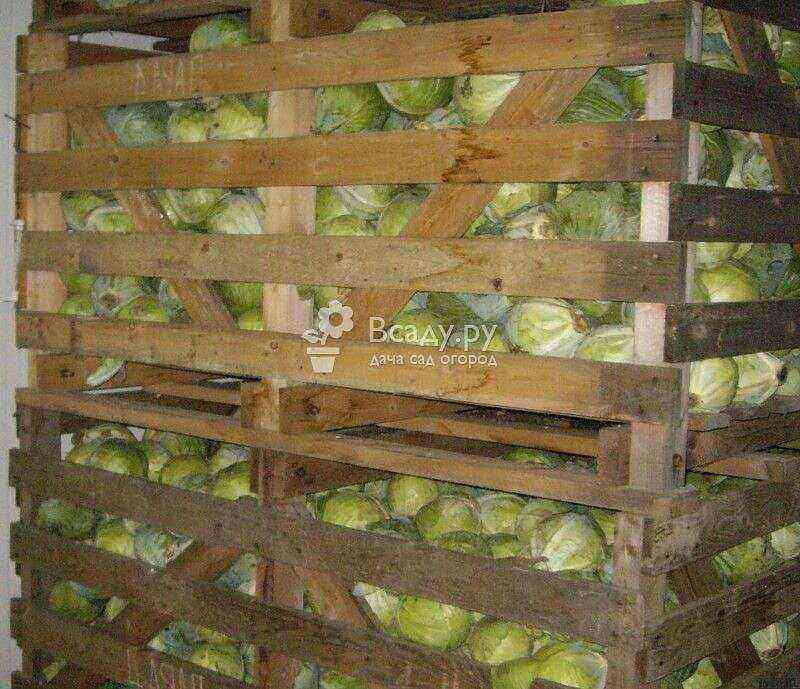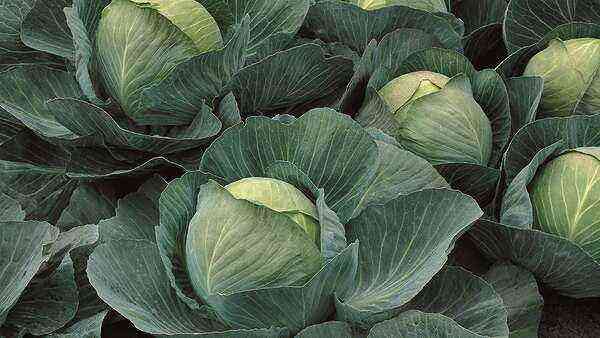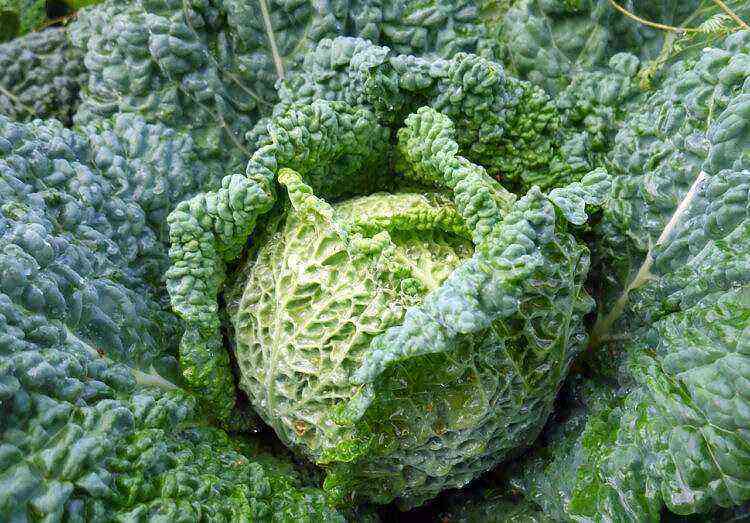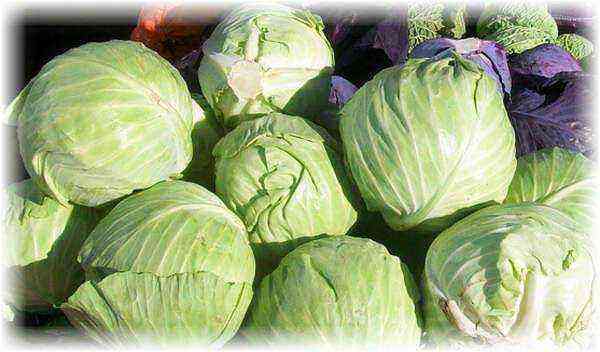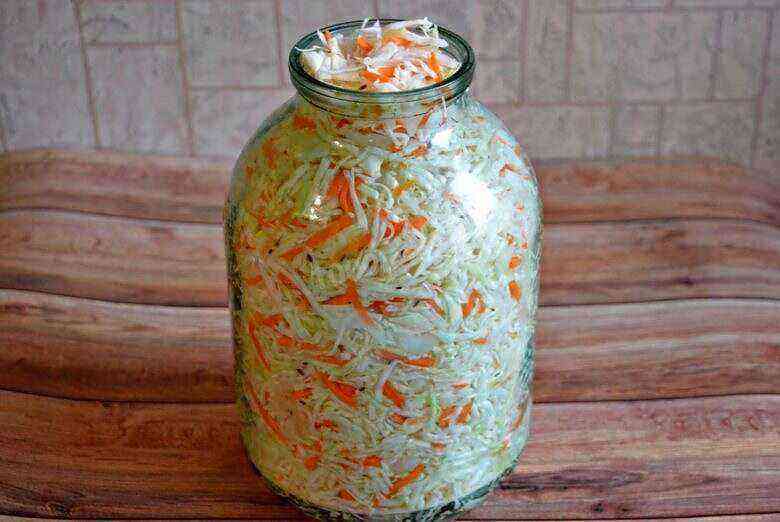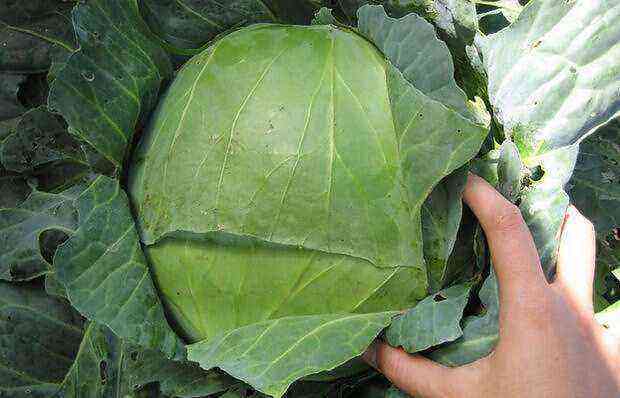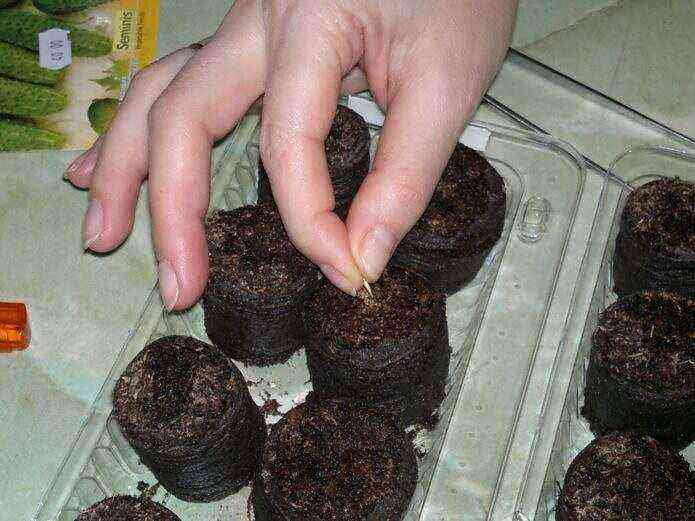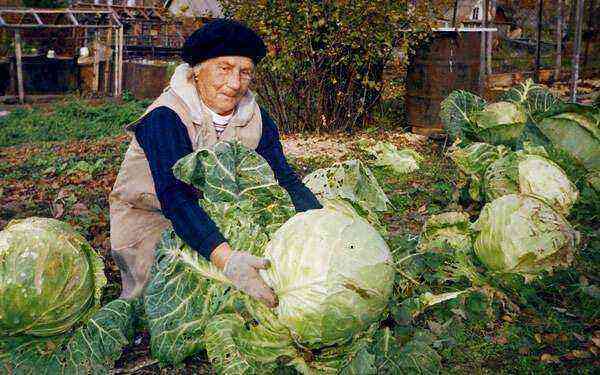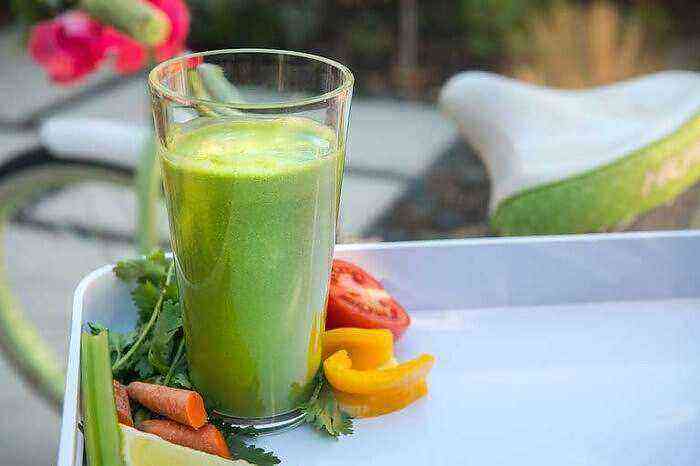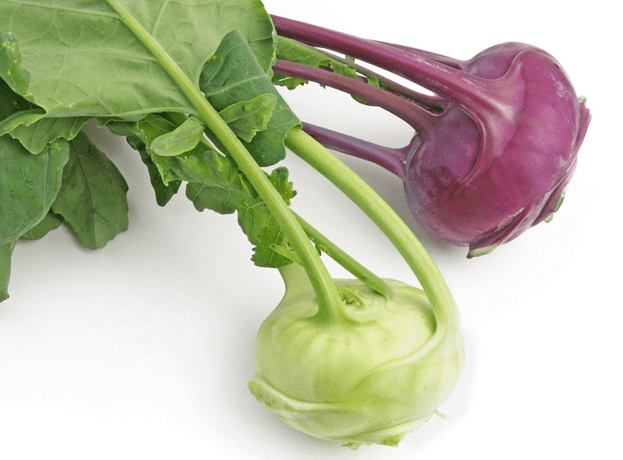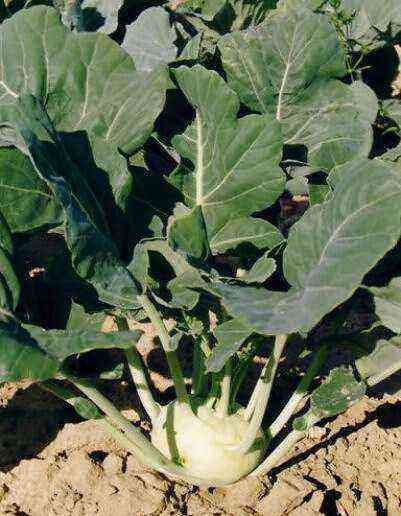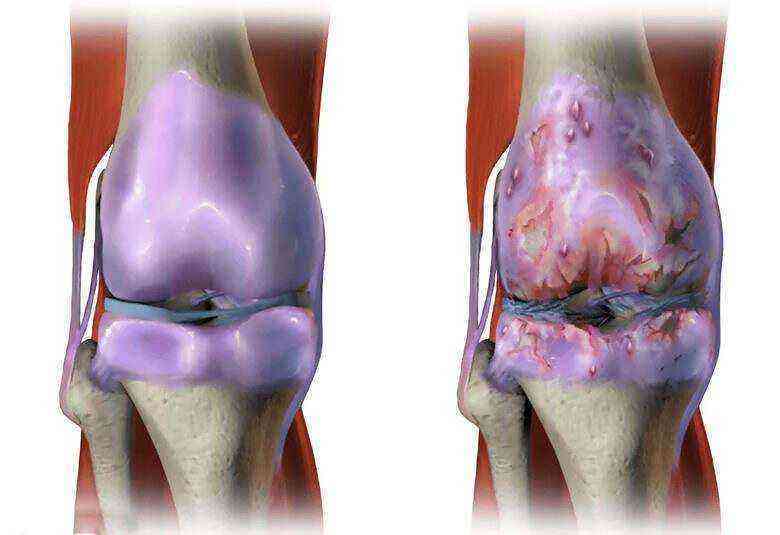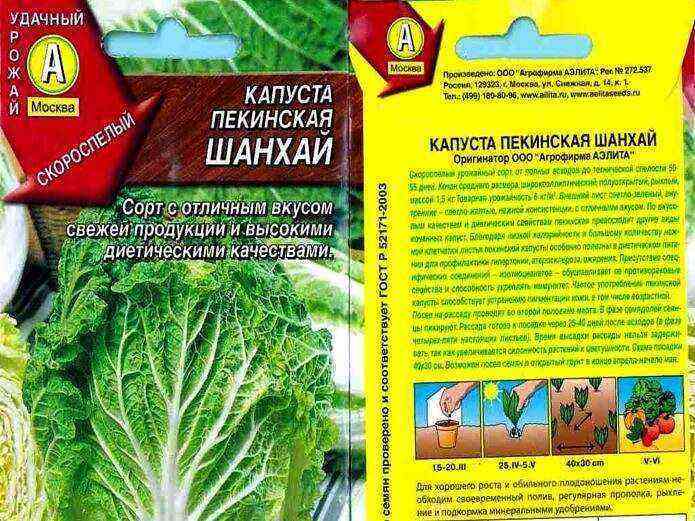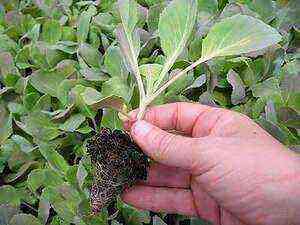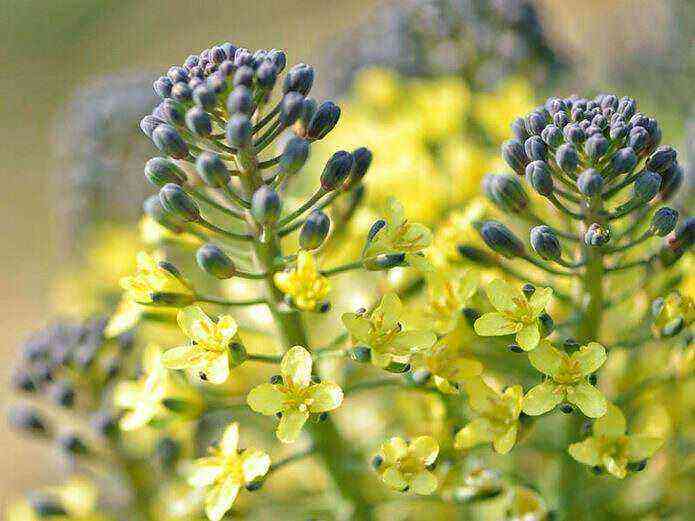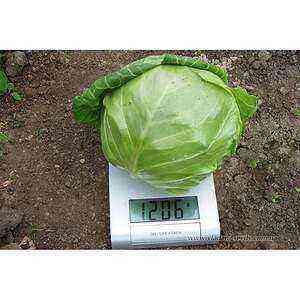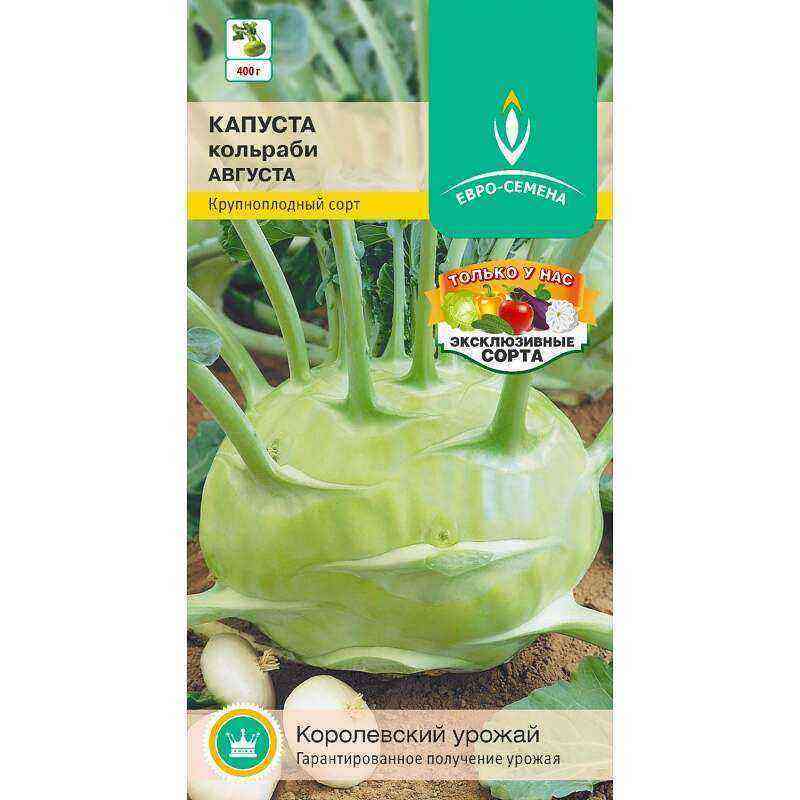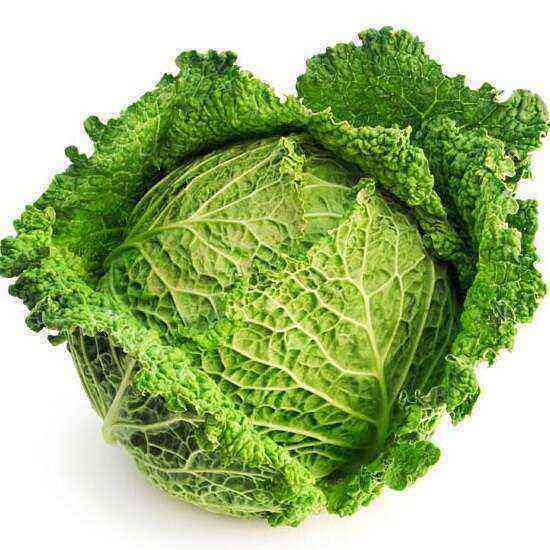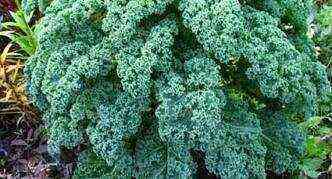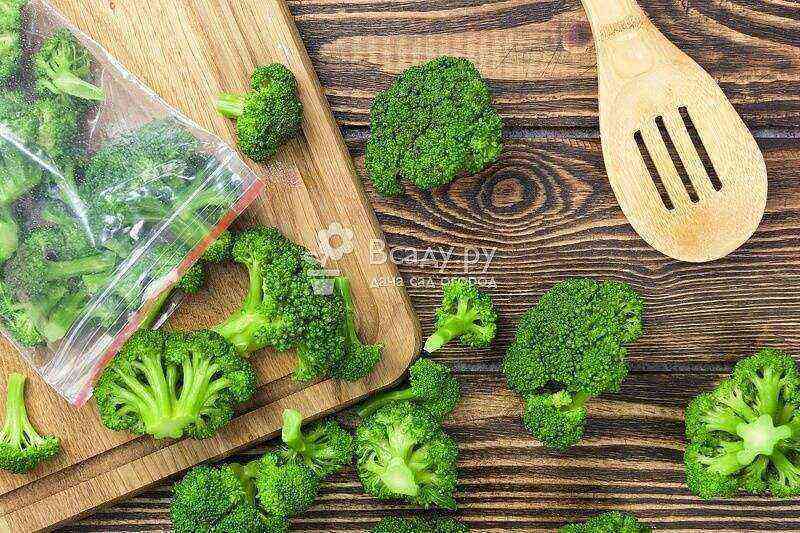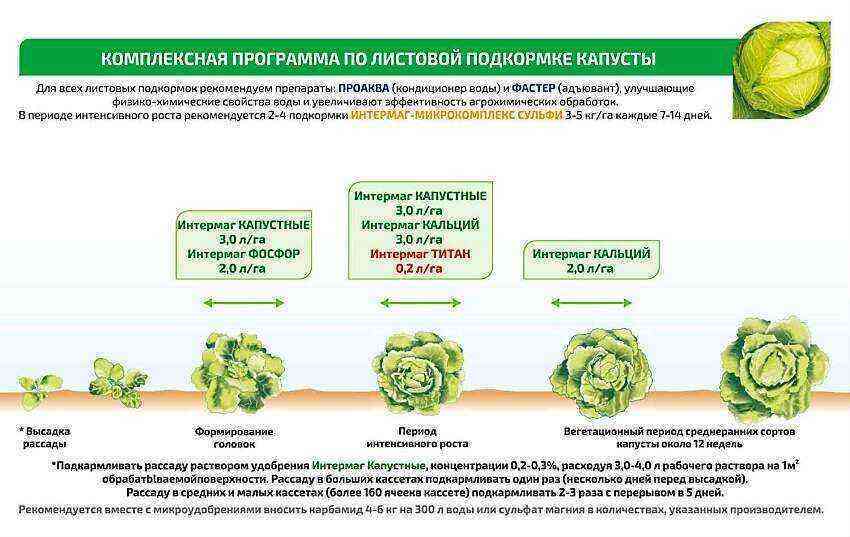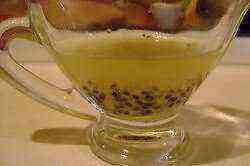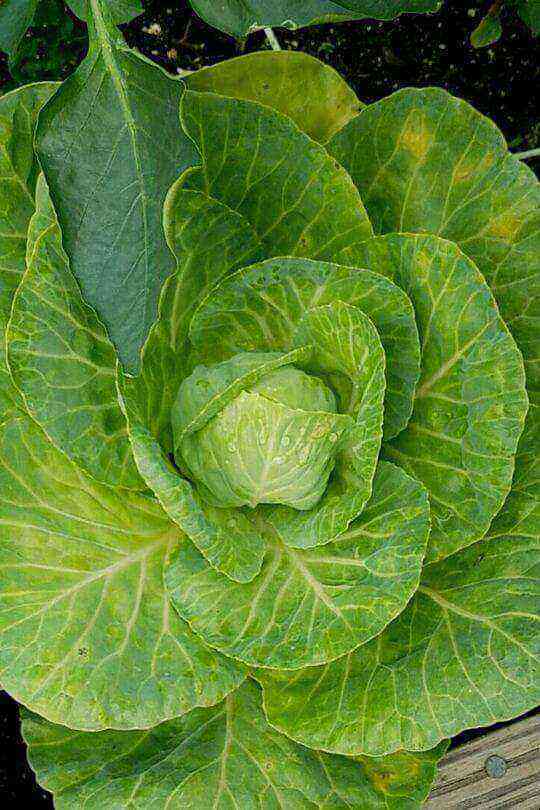Cabbage is one of the most popular types of vegetable crops. White, red, broccoli, kale, mizuna – this is not the whole list of a huge variety of types and forms of this vegetable. Moreover, all types of cabbage contain vitamins and minerals useful for humans. Therefore, it is not surprising that cabbage has long won a place of honor in the diet of people.
Varieties of cabbage with heads of cabbage
Cabbage of any kind belongs to the Cruciferous or Cabbage family, which also includes such well-known crops as turnip and rutabaga. In Russia, every gardener grows white cabbage on his site, but there are a dozen more varieties that deserve our attention. We will talk about them in the article.
Do you know that a head of cabbage is a modified kidney? Botanists bred head varieties by artificial selection. In the first year, the plant has green leaves. Then the apical bud stops their deployment, grows to gigantic sizes and turns into a head of cabbage, from which a stem with leaves and yellow flowers grows. In the second year after flowering, cabbage fruits are formed – pods.

For selection, the largest seeds are selected, located on both sides of the partition between the valves.
White-washed
This is the most popular type of cabbage grown in different climatic latitudes, including in Russia. This species is distinguished by the largest heads. You can eat this vegetable both raw and stewed, boiled, pickled. Such popular dishes as borscht and cabbage cannot do without white cabbage. An irreplaceable ingredient for all kinds of salads. A distinctive feature of this variety is a long storage period, especially when fresh.
 The most common type of cabbage in Russia is white cabbage
The most common type of cabbage in Russia is white cabbage
Gained great popularity sauerkraut… Moreover, this form of preparation ensures the maximum preservation of the beneficial properties of this vegetable crop. Due to lactic acid fermentation, which occurs during fermentation, vitamins are “preserved” in cabbage. And when it enters the intestine, lactic bacteria provide it with beneficial microflora, which leads to an improvement in the functioning of the gastrointestinal tract.
On a note! Also, in the process of fermentation, a rare vitamin B12 is formed, which can only be found in algae among plant foods. This vitamin has a positive effect on many body systems. It also improves mood, memory, and raises energy levels.
Great content potassium provides quick disposal of excess fluid in the body, improves heart function. Iron significantly improves blood composition. Fiber, which is found in large quantities in this vegetable, helps to eliminate cholesterol from the body.
This variety is widely used for medicinal purposes. Fresh plant leaves and juice are best suited for this. At a time when there were still no industrial cosmetics, cabbage juice was used as a skin rejuvenator. For oily skin, a sauerkraut mask will be useful.
White cabbage contains:
Vitamins
Minerals
А
калий
В1
кальций
В2
магний
В4
натрий
В6
сера
В9
фосфор
С
хлор
Е
К
РР
Interesting to try! For cabbage lovers who can hardly wait for the crispy vegetable to ripen, breeders have brought out cone-shaped (conical) cabbage!
 White conical cabbage
White conical cabbage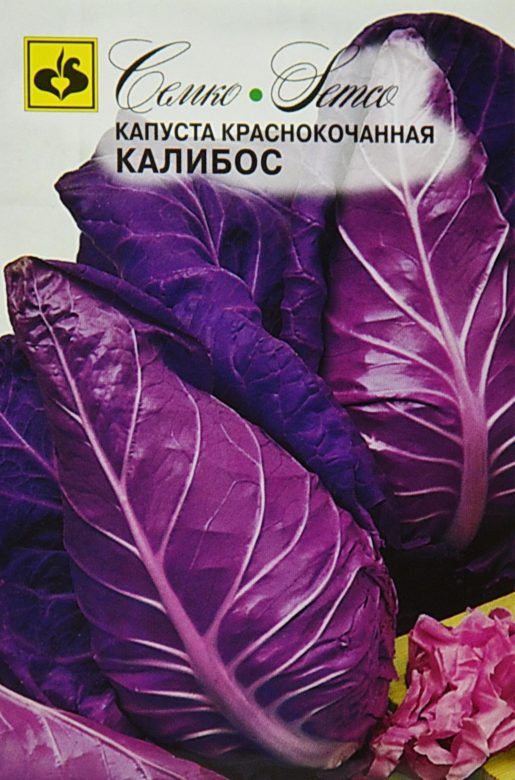 Red cabbage “Kalibos”
Red cabbage “Kalibos”
This vegetable, unusual in appearance, has quite common agrotechnical characteristics. Perhaps the main difference from the round white cabbage is the ultra-early ripening period, softer and more delicate leaves and, of course, a bizarre elongated cone-shaped shape.
of red
More precisely, this variety would be called violet-headed. In appearance, this variety is exactly the same as the white one, only the leaves differ in red-violet color and higher density.
So the question is: as the purple / blue cabbage is called, we get a slightly strange answer – red or red cabbage!
A distinctive feature of this species is the ability to use young leaves for food, even when the heads of cabbage have not yet formed. The forks themselves in this variety are small in size and have a dense structure.
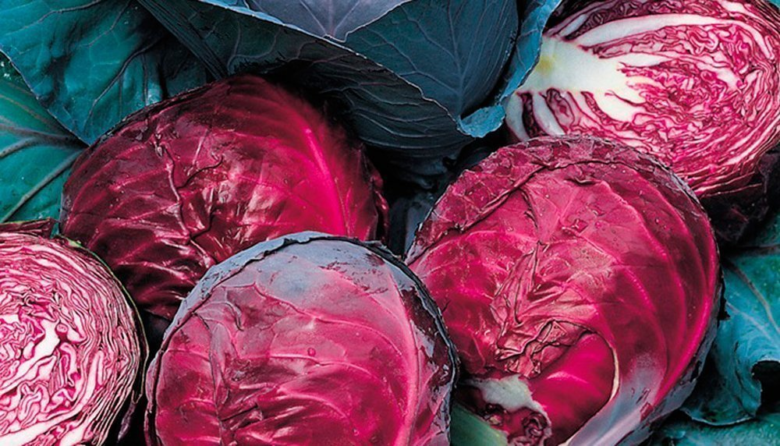 Red cabbage – healthy and bright
Red cabbage – healthy and bright
Red cabbage improves the functioning of the cardiovascular system (vascular elasticity increases, blood pressure normalizes) and metabolism in the body. This is due to the substance anthocyanin, which is part of this type of cabbage vegetables.
On a note! Anthocyanin is an antioxidant color found only in red vegetables.
Most often, this cabbage is added to fresh salads, since after heat treatment the leaves turn brown-gray and do not look very appetizing. But you can pickle and ferment this variety, while the leaves will remain a beautiful red color with a purple tint.
Vitamin C content this kind richerthan white cabbage, twice, in terms of carotene content – four. This vegetable is full of carbohydrates, therefore it is indispensable in the diet of people with diabetes.
Well suited for long-term storage, it is capable of retaining useful properties throughout the winter. It is also more resistant to cold, so it is better suited for growing in the northern regions than white cabbage. Red cabbage also has disadvantages. Compared to white cabbage, it gives a lower yield and has coarser leaves.
Savoy
This variety differs from white cabbage in color and texture. Its leaves are bright green and have a corrugated, bubbly shape. Moreover, the leaves are much thinner than those of the white cabbage. There are practically no veins in this species. Has a sweetish taste. The name of the cabbage comes from the county of Savoy, located in Italy, in which this type has become traditional.
Interesting fact! This variety is not liked by pests due to the content of mustard oil in the leaves. The leaves of this species are less juicy than those of the white cabbage. And in terms of yield and storage duration, it is inferior to the red sister.
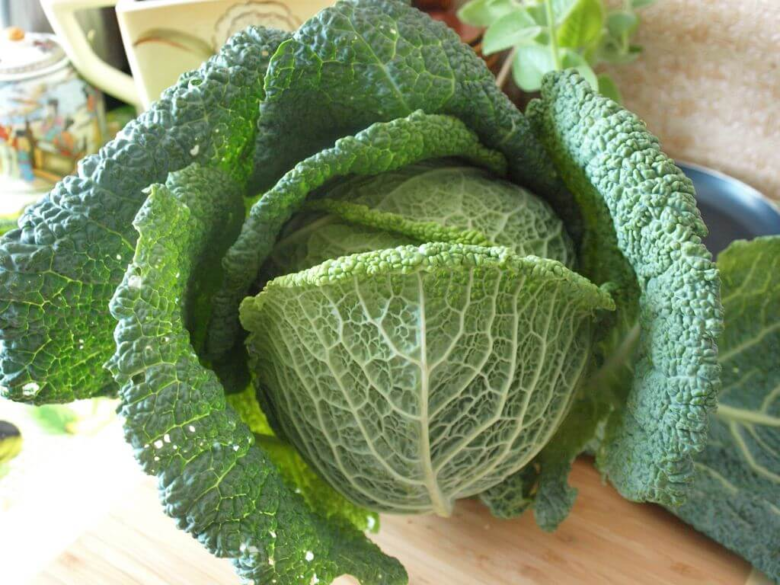 Savoy cabbage with bright green corrugated blister leaves
Savoy cabbage with bright green corrugated blister leaves
This type is suitable for preparing all kinds of salads, soups and, especially, cabbage rolls, since the leaves are well understood if they are poured over with boiling water. Savoy is not suitable for pickling because of the tenderness of the leaves. When used in salads, fresh cabbage should not be pre-sliced, nor is it suitable for frying. If you need to send the cabbage to the pan, boil the vegetable before frying. If you want to add savoy cabbage to your soup, soak the leaves in ice water 10-15 minutes before cooking, they will become denser.
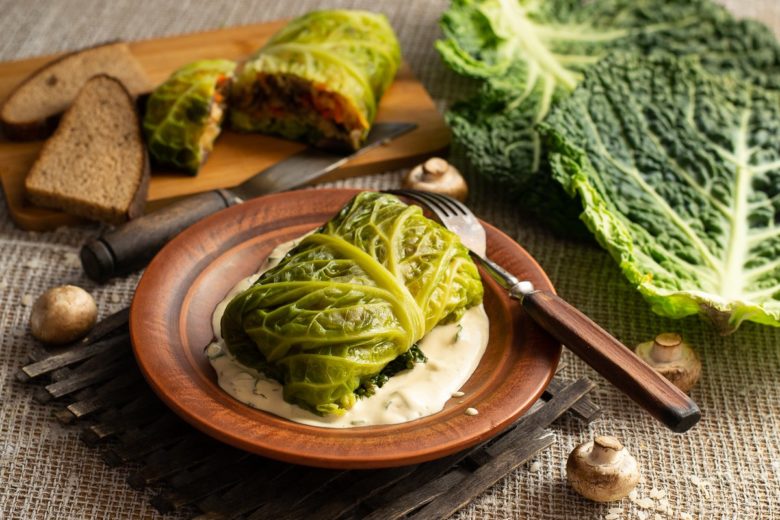 Very beautiful and exquisite cabbage rolls
Very beautiful and exquisite cabbage rolls
It should be used with caution in case of problems with the thyroid gland and stomach diseases. This vegetable restrains the negative effects of carcinogens on the human body. Contains such a rare antioxidant as glutathione. Vitamin and mineral composition of savoy cabbage:
Vitamins
Minerals
B2 molybdenum B6 calcium K magnesium C (ascorbic acid) phosphorus copper manganese
Savoy cabbage has a very low calorie content, therefore it is excellent for inclusion in a person’s diet while losing weight. It also has a low sugar content, so it can be used in the diet of diabetics. Well absorbed by the body, suitable for feeding children and the elderly.
Brussels
An interesting variety that is very different from the rest. First of all, this cabbage can have not one, but as many as 100 small heads of cabbage with a diameter of about 2-3 centimeters. They look like mini cabbage. The stem, to which the forks are attached, can grow up to a meter in height. The taste of Brussels sprouts is also unusual. Mustard oil is present in the leaves, which provides a nutty flavor. In Russia and neighboring countries, this cabbage is rare.
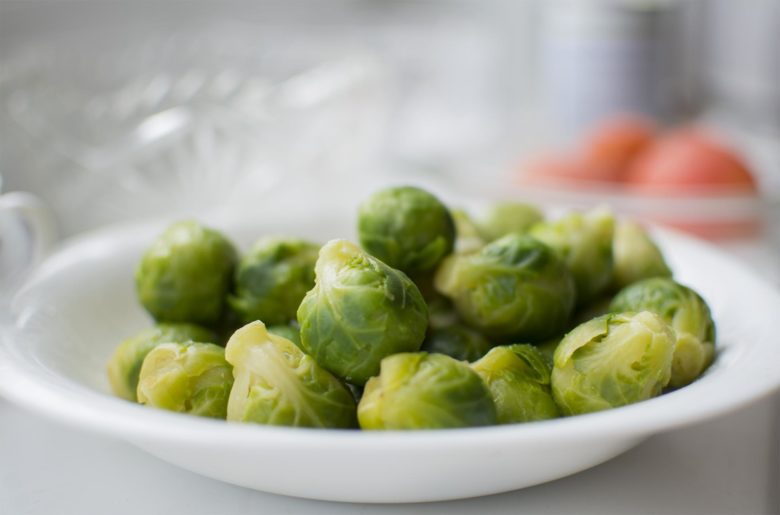 Small heads of Brussels sprouts, on one plant – from 20 to 100 pieces.
Small heads of Brussels sprouts, on one plant – from 20 to 100 pieces.
Well suited for conservation, as a rule, this species is pickled with whole heads of cabbage. Also suitable for boiling, after which it is customary to fry Brussels sprouts.
This species is considered the most valuable because of the high content of vitamins. A, K, C, group B и omega-3 fatty acids. It contains a large amount of minerals: calcium, potassium, phosphorus, etc.
Brussels sprouts are beneficial for the cardiovascular system of the body, as the components contained in it lower cholesterol. It is rich in fiber, which improves digestion. Even broccoli is superior in antioxidant content. Due to the high content of vitamin C, this variety helps to strengthen the immune system. It has an anti-inflammatory effect.
On a note! Brussels sprouts contain such a rare antioxidant as kaempferol, which can slow the growth of cancer cells and help the body cope with inflammation.
Brussels sprouts are great for people with diabetes as they maintain optimal blood sugar levels.
Instead of a head of inflorescence
All types of cabbage are saturated with nutrients and vitamins. Their introduction into the daily diet improves digestion, the work of the cardiovascular system, lowers blood sugar, the leaves and juice of this vegetable have medicinal properties. If we make a rating of usefulness, then the top three will look like this:
- Brussels sprouts – 1st place;
- Broccoli – 2nd place;
- Cauliflower – 3rd place.
The last two, as such, do not have a head of cabbage, but they are easily separated into inflorescences. How are they different from their “sisters”?
color
This species is an inflorescence that consists of more than two thousand buds. Most common in Europe. Interestingly, cauliflower does not exist in nature in the wild, as it is completely created by breeders. This is the most capricious young lady of the whole cruciferous family, it is not easy to create suitable conditions for her cultivation.
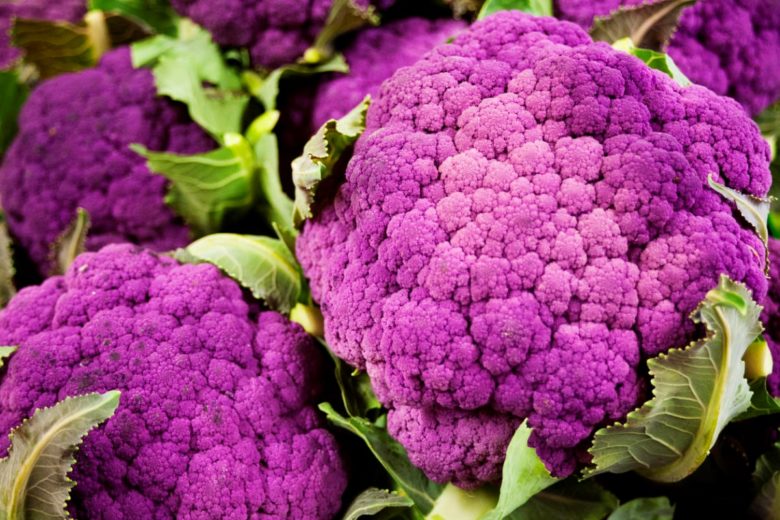 Cauliflower
Cauliflower
Most often, this variety is used boiled. It is customary to add a small amount of sugar to the water in order to maintain the shape of the head. You can cook with mineral water, in which case it acquires interesting flavor notes. Cauliflower contains:
Vitamins
Minerals
A sodium B1 calcium B2 magnesium B3 iron B5 potassium B6 manganese B9 phosphorus C zinc E copper K fluorine iodine chlorine
Due to the high content of folic acid, it is very beneficial for pregnant women, has a positive effect on the health of the fetus.
Cauliflower is also quickly absorbed by the body, which helps eliminate hunger. Therefore, this vegetable is indispensable in the diet of people who are struggling with extra pounds. It also has a low calorie content – 100 grams of this vegetable contains 25 calories. The ability to regulate the level of hormones in the human body has been noted.
On a note! In cooking, steamed cauliflower or fried over low heat is most often used. Boiling and stewing this product is not recommended, as these processes deprive the vegetable of its useful properties. You can also eat it raw, for example, in a salad.
When choosing this type of cabbage vegetables in the store, you should pay attention to the integrity of the packaging, the absence of any stains on the vegetable itself. Do not store this variety in the refrigerator for too long, the maximum period is one week.
Romanesco
It is the closest relative of cauliflower. It also consists of inflorescences, but in a very interesting shape. This is a very unusual and beautiful cabbage. It can be described as a huge number of stars connecting in a cunning spiral. This is a fractal plant, a phenomenon that is quite common in the flora.
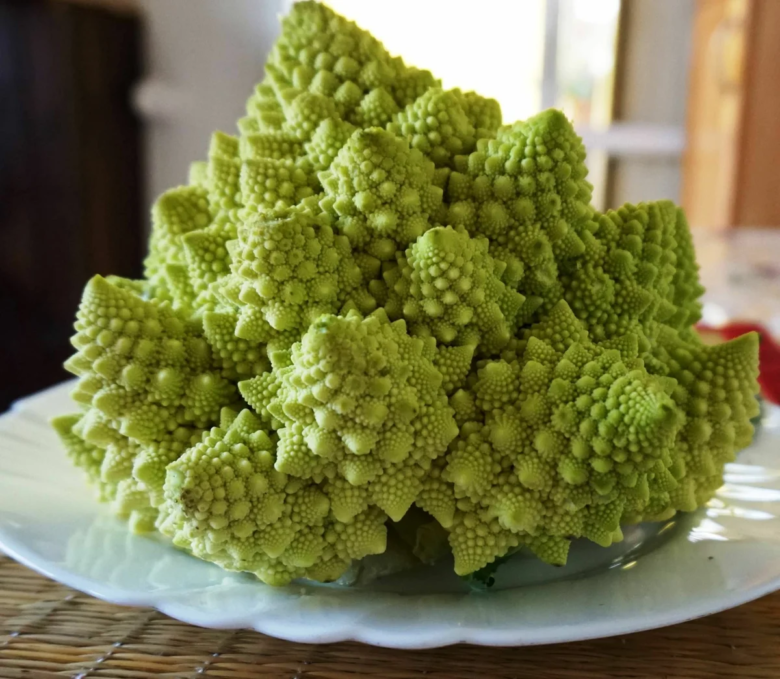 Romanesco is the most unusual cabbage in shape
Romanesco is the most unusual cabbage in shape
Interesting is the factthat there is controversy about the origin of this species. There is a hypothesis that this species was due to the process of crossing broccoli and cauliflower in the laboratory. There is also a version about the cross-pollination of these two species naturally in nature.
In cooking, it is used in various forms. It is equally well suited for frying and baking, as well as for adding to salads. It is useful boiled. It has a pleasant creamy nutty taste. This type cannot be stored in the refrigerator for a long time due to the rapid loss of useful properties. This problem can be solved by deep freezing. It can decorate many familiar dishes due to its unusual appearance.
This variety is very healthy. Strengthens the immune system, improves heart function and strengthens the walls of blood vessels. Eating Romanesco regularly helps to improve vision. It also stimulates the body to fight viral infections, in the treatment of flu and colds. It has a rejuvenating effect on the skin. Has a higher content of folic acid, which is extremely necessary for bearing a baby. This is a low allergenic product.
On a note! When choosing in a store, pay attention to the stability of the shape, the absence of ice and the external freshness of the vegetables.
Broccoli
This green cabbage looks very similar to cauliflower. It differs from the two previous types in that it has many small inflorescences, and not one large one. It looks like a green flower.
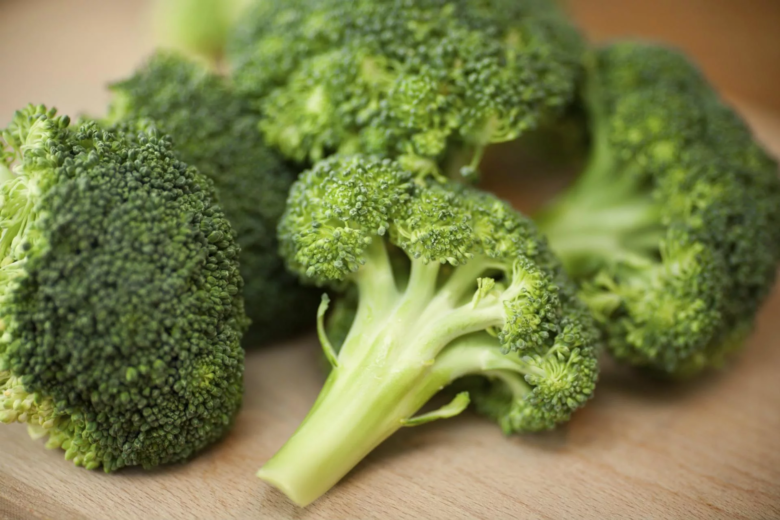 Extraordinarily Healthy Broccoli Blossoms
Extraordinarily Healthy Broccoli Blossoms
This type is widely used in cooking. Broccoli is good both boiled and fried and stewed. Often added to sauces, soups and pies. Suitable for conservation. It is believed that steaming broccoli is best. The most useful will be fresh. The taste of this variety is similar to the colored one, but much softer.
Broccoli is low in calories. Great for diabetics. Can be used in the diet of pregnant women and young children. It is often used as a first complementary food.
This type of cabbage is one of the most healthy vegetables, as just one serving can replace a multivitamin tablet. Broccoli contains the following vitamins, macro- and microelements:
Vitamins
Minerals
В1
кальций
В2
магний
В5
калий
В6
марганец
В9
фосфор
РР
цинк
Е
железо
К
сера
Kale varieties
The progenitor of all modern cabbage crops, including cabbages, is Collard greens. This is a wild-growing predecessor – the most adult of the whole family. In culture, many subspecies of collard greens have been bred, which are often confused with salad varieties due to a similar appearance. In Russia, the most popular is the delicate and tasty “Peking”. Or, as it is often called, Chinese cabbage.
Chinese cabbage (Chinese cabbage)
This variety is native to China. It is because of the country of origin that Peking cabbage is sometimes called Chinese cabbage, although there is a separate species – Chinese collard greens (pak-choi). It looks like a Peking, but does not form a head of cabbage, only a rosette of green leaves.
Peking cabbage forms a loose, elongated head of cabbage. This species differs from the usual white-headed tenderness and juiciness of the leaves. It is characterized by high productivity and a large amount of vitamins A, C, potassium in the composition.
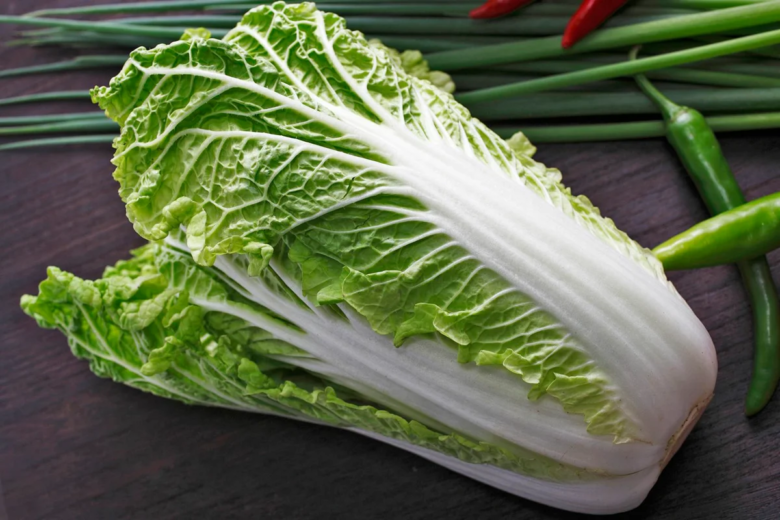 Delicate and juicy Chinese cabbage
Delicate and juicy Chinese cabbage
Pale green leaves are common, and there are also red-green and red varieties. This type is sometimes called “Chinese salad”, as it is most often used fresh and canned in salads. But other dishes can also be prepared using Peking cabbage, such as cabbage rolls or the popular kimchi – Korean-style Peking cabbage.
On a note! Oriental cabbage is characterized by a minimum calorie content, per 100 grams – only 12 calories. The most useful is the white part of the leaves.
When choosing this vegetable in the store, pay attention to the turgor of the leaves – if they are elastic, not stunted, most likely the vegetable is fresh.
Bok-choi (pak-choi)
Also native to China, it is one of the oldest vegetable crops in this country. Nowadays it is actively used in Europe. It has scattered rosettes, each 30 cm in diameter, which do not form into a single head of cabbage. In some countries this variety is called mustard or celery cabbage.
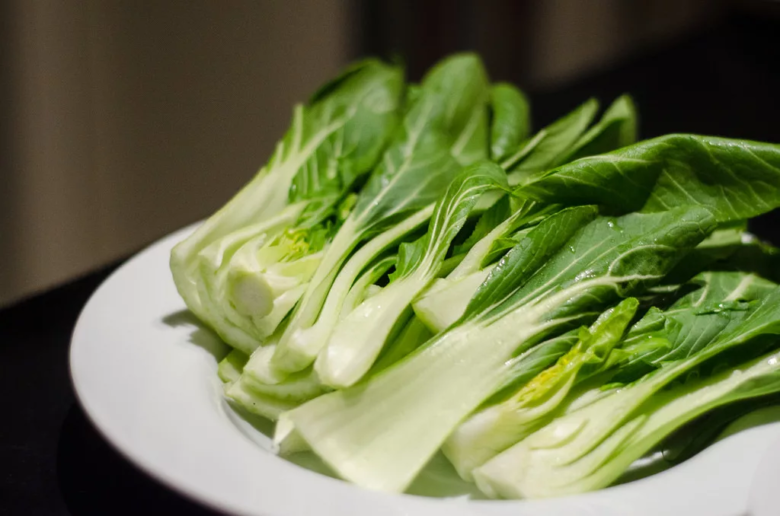 Fresh bok choy leaves
Fresh bok choy leaves
It differs from the Beijing one in its bright green color and coarser leaves. It tastes juicier, has a spicy pungent aftertaste. The fewer leaves a vegetable has, the tastier it will be. Therefore, small specimens are appreciated. You can eat both the white and green parts of the leaves. Most often, bok choy is added to various salads and soups.
On a note! When buying, pay attention to the leaves – they should not be too long. Fresh leaves are crispy and not sluggish. It is necessary to store this variety in the refrigerator, while it is better to separate the leaves from the stalk and wrap them in a damp towel.
This vegetable is distinguished by a high content of vitamin K. This element is responsible for blood clotting. It is enough for a person to eat 200 grams of this cabbage to provide the necessary daily supply of vitamin K in the body. One hundred grams contains 80% of the daily intake of vitamin C. Bok-choy cabbage has a high content of vitamin A, which is involved in the renewal of the skin.
Kale (gruncol, kale)
Another interesting variety of the cabbage family. This variety is also called grunkol, kale, browncol or kale. This is a very unusual cabbage, as instead of the usual heads of cabbage, openwork leaves are formed in it. They can be green or purple in color. It is customary to eat only the leaves of this vegetable, since the stems are too hard.
 Openwork kale leaves
Openwork kale leaves
In terms of protein content, feces ranks first among plant foods. It can be a great substitute for meat. Therefore, kale can be used in a vegetarian menu. It is rich in omega-3 fatty acids, the content of which is not inferior to fish products. One serving of feces will provide the body with vitamin A. This variety contains lutein useful for vision, helps in treating myopia and slowing down age-related changes in vision.
Interesting Facts! This is one of the most unpretentious vegetable crops. Grunkol can even be grown on a windowsill at home. It perfectly tolerates freezing, while it becomes even tastier.
Used in fresh salads and smoothies. In this form, you can save a maximum of the vitamins and nutrients of this vegetable. It is also used in side dishes, soups, pies. You can freeze, dry or ferment for the winter.
Often gruncol can be found in flower beds and in pots as a houseplant, and not as cabbage, which we are used to eating, and in vain. This cruciferous plant contains more calcium than milk! Known for use as a forage crop.
Mizuna (Japanese cabbage)
This variety comes from Japan. It is a whole long lanceolate leaves. In our latitudes, it is better known as salad or Japanese salad. In appearance it resembles arugula.
 Mizuna – Japanese salad
Mizuna – Japanese salad
In its composition, mizuna is very similar to white cabbage. Mizuna has a pleasant spicy taste, the leaves are tender.
In cooking, Japanese cabbage is most often used in fresh salads, soups, sandwiches, especially with cheese and feta cheese. You can also salt, pickle and dry this variety for the winter.
On a note! It can be used in any dish instead of spinach, it will give them a new taste and spiciness.
A very unpretentious species, which can be grown even in a flowerpot on a windowsill. You can cut the leaves, but to better keep the vegetable in the refrigerator, you should pluck it by the root and pack it in a plastic bag.
Decorative
This is perhaps the most beautiful cabbage of all types. Instead of heads of cabbage, it has rosettes that look like rosebuds. They can be painted white, purple, pink or milky. Also, several colors can be combined in one plant.
 Flower bed decoration – ornamental cabbage
Flower bed decoration – ornamental cabbage
This variety is undersized, blooms from September to December until the first snow. You can then transfer the plant to a flower pot to extend the flowering period. A good solution would be to plant ornamental cabbage in the same flower bed with tulips. This neighborhood will allow you to admire flowering plants from early spring to winter.
Most often used as flowers, but few people know that this species can also be eaten. But there are varieties that are very bitter and therefore unsuitable for nutrition.
kohlrabi
In this form, there are no heads or inflorescences, a kind of cabbage without leaves. Kohlrabi is a stem-grower, the core of which is very juicy and tender. Occurs in green, white, lilac (purple) colors. Translated from German, kohlrabi literally sounds like “cabbage turnip”, in its appearance it really resembles a cross between turnip, radish and giant radish, it tastes like a juicy, sweet stalk of white cabbage.
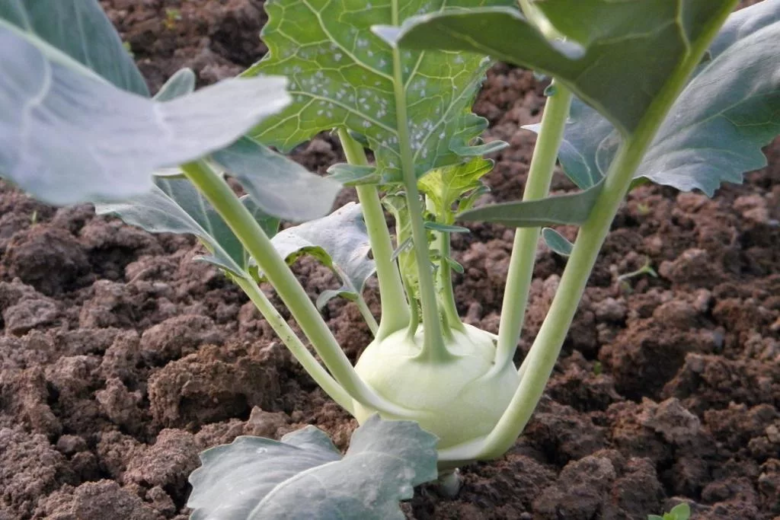 Kohlrabi – cabbage turnip
Kohlrabi – cabbage turnip
A very unpretentious variety, it grows even in the northern regions. Kohlrabi is resistant to pests.
Interesting to know! This type is often referred to as health cabbage. By the amount of vitamin C in the composition it is not inferior to citrus crops. According to the degree of assimilation of vitamins by the human body, kohlrabi bypassed apples.
This species helps in the prevention and treatment of infectious diseases. Kohlrabi also accelerates metabolic processes in the human body. Suitable for inclusion in the diet for people who want to lose weight and maintain the results obtained for a long time.
Kohlrabi has a positive effect on the work of the heart, strengthens blood vessels. Helps to improve blood pressure indicators, cleanse the body of toxins. Fresh juice from this vegetable can be used to treat coughs and sore throats.
When cooking, kohlrabi must be peeled from the top peel. Traditionally, this type of cabbage plant is used in salads.
Rapeseed (forage cabbage)
This crop has stems and leaves. Due to its external resemblance, it is even compared to a small palm tree. This plant has found its application as feed for livestock and poultry. Leaves of fodder cabbage are very tough and dry, therefore they are not used for human food.
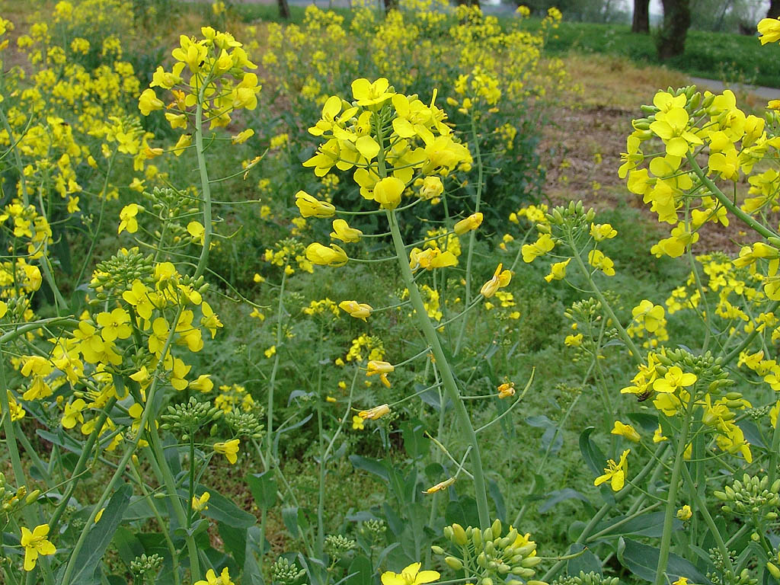 Bright yellow flowers of rapeseed, forage cabbage
Bright yellow flowers of rapeseed, forage cabbage
Rape is very valuable in its composition. Increases the fat content of milk in cows, has a positive effect on the strength of the shell of chicken eggs. Also, this culture is rich in protein. Used for making silage.
It is one of the main forage crops in many countries of the world. The leaders in the cultivation of this crop are Canada and the DPRK. In Russia, it is also widely used as a fodder crop.
Conclusion
The article discusses the most popular varieties of cabbage. The variety of this species is surprising, and the beneficial properties of all varieties of cabbage leave no doubt about the need to introduce this vegetable into the diet of every person. This vegetable is also useful for children, especially varieties such as broccoli and colored. The versatility of cabbage makes it possible to use certain types of cabbage as forage crops for animals and even as an alternative to roses in flower beds.

What kind of cabbage is: 1 – wild; 2 – white-headed; 3 – Savoyard; 4 – Brussels; 5 – colored; 6 – broccoli; 7 – kohlrabi; 8 – Beijing; 9 – bok-choy; 10 – decorative.
10 types of cabbage
